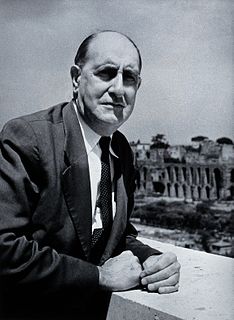
Brucellosis is a highly contagious zoonosis caused by ingestion of unpasteurized milk or undercooked meat from infected animals, or close contact with their secretions. It is also known as undulant fever, Malta fever, and Mediterranean fever.

Bovine malignant catarrhal fever (BMCF) is a fatal lymphoproliferative disease caused by a group of ruminant gamma herpes viruses including Alcelaphine gammaherpesvirus 1 (AlHV-1) and Ovine gammaherpesvirus 2 (OvHV-2) These viruses cause unapparent infection in their reservoir hosts, but are usually fatal in cattle and other ungulates such as deer, antelope, and buffalo. In Southern Africa the disease is known as snotsiekte, from the Afrikaans.

Milk fever, postparturient hypocalcemia, or parturient paresis is a disease, primarily in dairy cattle but also seen in beef cattle and non-bovine domesticated animals, characterized by reduced blood calcium levels (hypocalcemia). It occurs following parturition, at onset of lactation, when demand for calcium for colostrum and milk production exceeds the body's ability to mobilize calcium. "Fever" is a misnomer, as body temperature during the disease is generally not elevated. Milk fever is more commonly seen in older animals and in certain breeds.

Louping-ill is an acute viral disease primarily of sheep that is characterized by a biphasic fever, depression, ataxia, muscular incoordination, tremors, posterior paralysis, coma, and death. Louping-ill is a tick-transmitted disease whose occurrence is closely related to the distribution of the primary vector, the sheep tick Ixodes ricinus. It also causes disease in red grouse, and can affect humans. The name 'louping-ill' is derived from an old Scottish word describing the effect of the disease in sheep whereby they 'loup' or spring into the air.

Veterinary virology is the study of viruses in non-human animals. It is an important branch of veterinary medicine.

Warriston Cemetery is a cemetery in Edinburgh. It lies in Warriston, one of the northern suburbs of Edinburgh, Scotland. It was built by the then newly-formed Edinburgh Cemetery Company, and occupies around 14 acres (5.7 ha) of land on a slightly sloping site. It contains many tens of thousands of graves, including notable Victorian and Edwardian figures, the most eminent being the physician Sir James Young Simpson.
The Moredun Research Institute is a scientific research institution based at the Pentlands Science Park, in the Bush Estate area of Midlothian, Scotland. It conducts research into diseases of farm livestock and the promotion of animal health and welfare.

Sir John McFadyean FRSE LLD was a Scottish veterinary surgeon and Professor of Veterinary Science. He was Principal of the Royal Veterinary College from 1894 to 1927.

Sarah Cleaveland is a veterinary surgeon and Professor of Comparative Epidemiology at the University of Glasgow.
Quintin McKellar is a British veterinary surgeon and academic. In the 2011 New Year Honours list, he was appointed a CBE for services to science during his tenure as principal of the Royal Veterinary College. Since January 2011 he has been vice-chancellor of the University of Hertfordshire.
John Burns Brooksby was a Scottish veterinarian, animal physiologist and veterinary virologist. He was a recognised expert on serology and especially foot-and-mouth disease, and identified and categorised the majority of its known forms. His advice was taken on an international level, and he played a significant role in disease control in Africa and the Middle East.

Sir Thomas Dalling was a Scottish veterinarian and lifelong champion of veterinary research and education.
Prof Henry Dryerre FRSE MRCS LRCP was a Scottish veterinarian and animal physiologist. He was Emeritus Professor of Physiology at the Dick Veterinary College in Edinburgh. The Carnegie Trust for the Universities of Scotland administer a bursary known as the Henry Dryerre Scholarship which is named in his honour. Due to his lineage he is sometimes referred to as Henry Dryerre IV.
Prof Alexander Edington MD CM FRSE (1860-1928) was a Scots-born bacteriologist and medical author strongly associated with South Africa. He made an important study of the Spanish flu pandemic of 1918.
Dr Thomas Goodall Nasmyth FRSE DL JP DPH was a Scottish physician, medical author and historian. He served as Medical Officer of Health for Fife, Kinross and Clackmannanshire. He was one of the first (1899) to link Bovine Tuberculosis to the human form, later leading to the widespread use of pasteurisation of milk. He was influential in the decision to bond whisky for 3 years
Sir Alexander Robertson was a Scottish veterinarian and administrator.
Dr Peter Albert Laing Wight FRSE FRCVS FRCPath (1924–1998) was a 20th-century British veterinarian and expert in poultry research.

Animal vaccination is the immunisation of a domestic, livestock or wild animal. The practice is connected to veterinary medicine. The first animal vaccine invented was for chicken cholera in 1879 by Louis Pasteur. The production of such vaccines encounter issues in relation to the economic difficulties of individuals, the government and companies. Regulation of animal vaccinations is less compared to the regulations of human vaccinations. Vaccines are categorised into conventional and next generation vaccines. Animal vaccines have been found to be the most cost effective and sustainable methods of controlling infectious veterinary diseases. In 2017, the veterinary vaccine industry was valued at USD$7 billion and it is predicted to reach USD$9 billion in 2024.
Sir Stewart Stockman MRCVS (1869–1926) was a 19th/20th century British veterinarian who served as Chief Veterinary Officer to the Ministry of Agriculture and as President of the Royal College of Veterinary Surgeons for the year 1923/24 and President of the National Veterinary Association. He was an expert on foot and mouth disease.











